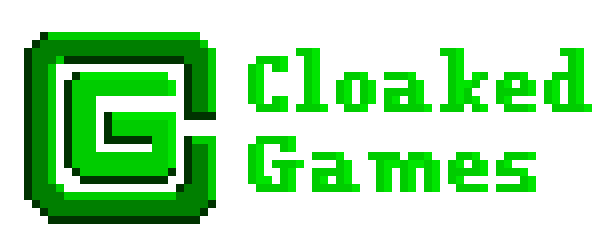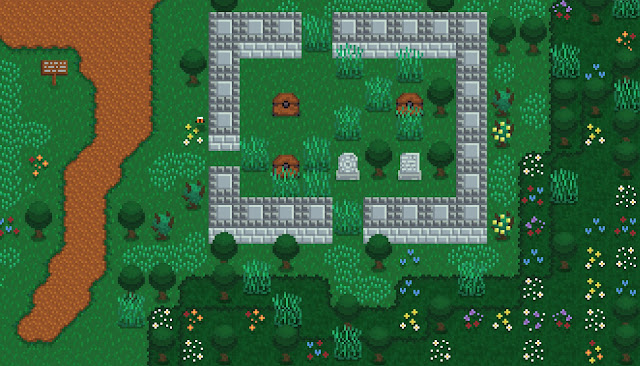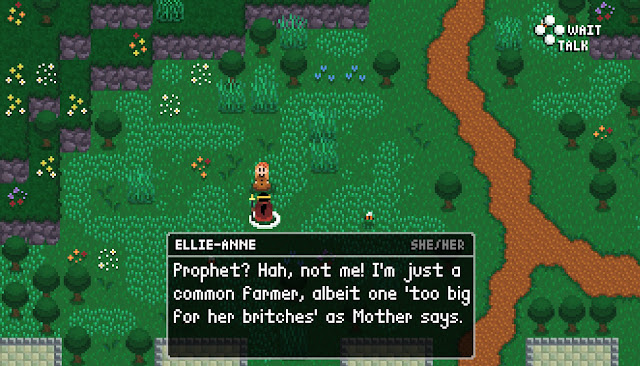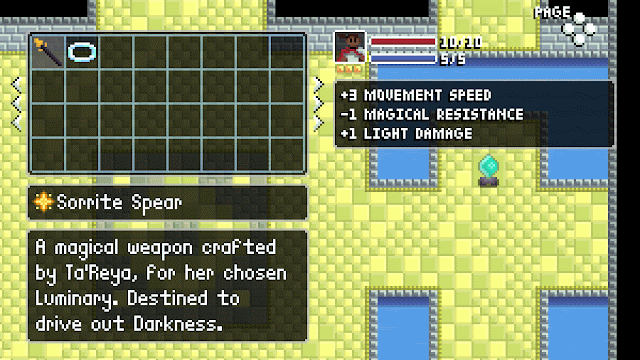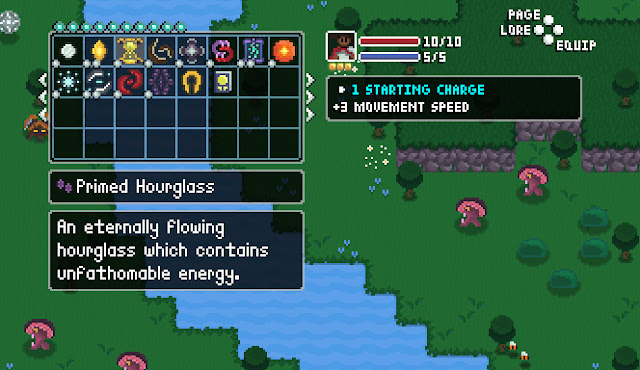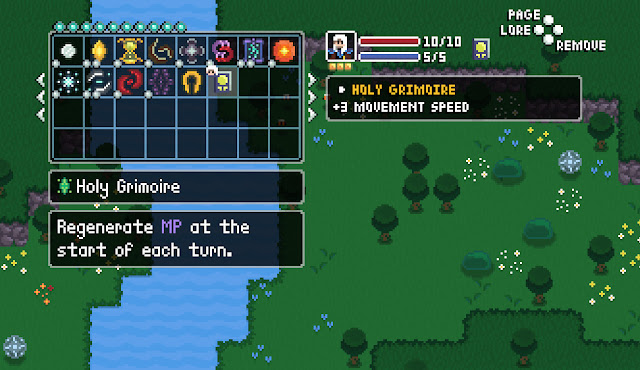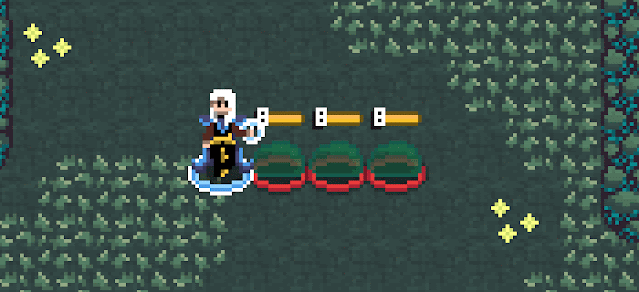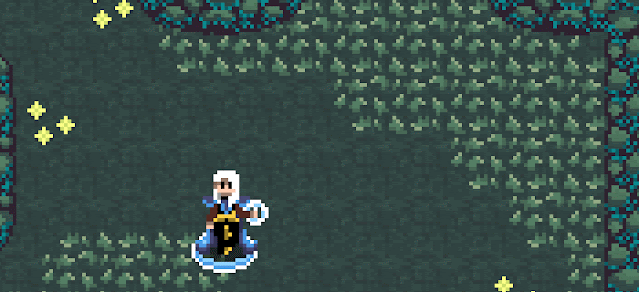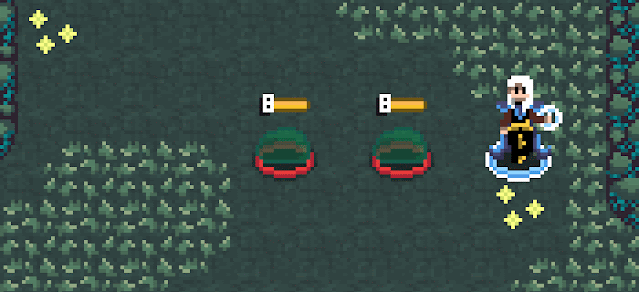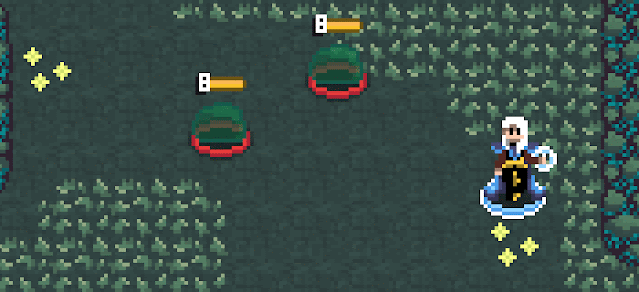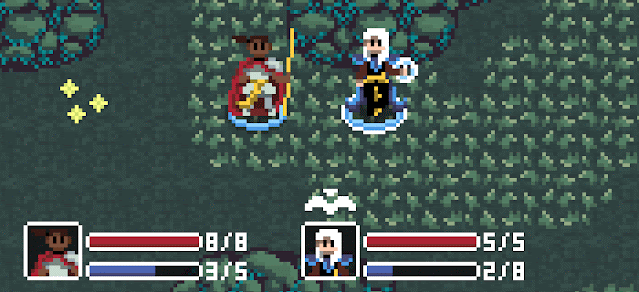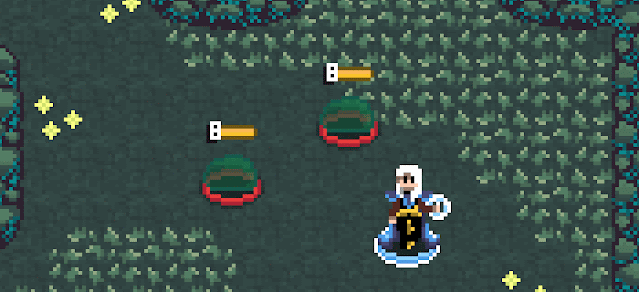As I move forward with the Daughter of Dreams combat prototype, I am working to develop each characters' combat abilities to be unique and synergistic. I wrote previously about the story and personality of each character, and their combat abilities will reflect this design as well. I want every character to have an entirely different approach to combat, using a unique style of weapon attacks as well as magic. Additionally, each character will have powerful synergies both with their own set of abilities, and in tandem with their allies to allow for elaborate strategies, setups, and awesome powerful attacks.
In this post, I will do a deeper analysis of Sonya, the Chosen Luminary. I will show each of her combat abilities, and explain how they are intended to synergize with the design of the character. I will also cover more details about Sonya's story specifically, and some of the ideas I have for the combat system overall. In the future I hope to write a similar post for each of the characters as well.
The Sorrite Spear
The first distinction between each character will be their primary weapon. Most characters will have basic attacks they can always perform using their signature weapons. Lydia fights with a chakram, Duran has a knife, Angela has a bow. Sonya carries her legendary Sorrite Spear, a glowing spear of light elemental magic, made of Sorrite, a magically enchanted metal.
 |
| Sorrite Strike and Sorrite Slash Attacks |
In combat, her spear functions as a primary melee (close-ranged) attack, though with a bit more range than other characters due to its length. Sonya herself is a warrior, so her melee attacks are powerful, and she will usually serve a role at the forefront of combat, taking damage so that other characters may act from a distance. Her basic attacks are a melee strike (which hits in a straight line) and a slash, which does more area damage around her.
Action Points
The actions that the player can take during their turn of combat is limited primarily by their Action Points (AP). Different abilities take different amounts of AP, and when the player has used all of their AP for that turn, the phase ends and the enemies get a chance to attack. Action points are shared across the entire party, so the player can choose how to spend their AP. The total AP refreshes at the start of each player phase. Magic Points (MP) is also used for magical attacks, and are refilled in other ways.
 |
| Using Charged Slash consumes 2 AP and 1 MP |
All the characters use AP to perform their abilities, but it is different for Sonya. One approach I am taking to make each character unique is to give them a different resource to manage. For Sonya, this resource is AP. Sonya's actions not only use AP, but they manipulate total AP, grant bonus AP, and consume extra AP to perform more powerful attacks and spells. Eventually, Lydia's abilities will depend on magic, while Duran will use abilities that consume his own health.
Special Attacks
Special attacks are generally more powerful variants of the character's primary weapon attack. For Sonya, her special attacks are designed to help her gain extra AP, and use that extra AP to deal extra damage.
 |
| Using Dynamic Strike to gain +1 AP |
Dynamic Strike: This attack is both a more powerful spear strike, and a method to gain extra AP to synergize with Sonya's AP based attacks. The attack deals more damage, and if it kills an enemy, the party will gain +1 AP at the start of the next turn. It is a high-damage finishing move that can chain into more powerful attacks the next turn.
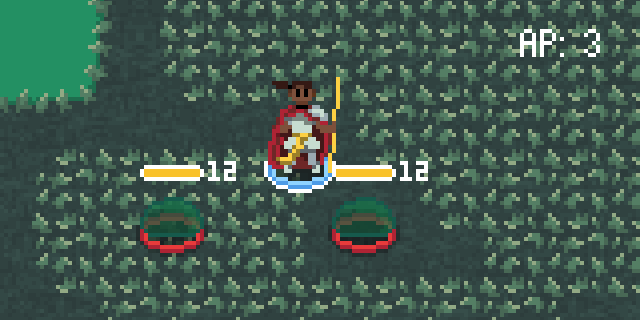 |
| Using Charged Slash with 3 AP |
Charged Slash: This attack is a wider slash attack that deals damage proportional to the party's total AP when it is used. In this case, the AP is three, so Charged Slash deals (x2) and does six damage. With this attack, Sonya might increase her AP with other abilities, then follow up with a Charged Slash to deal massive damage.
I debated for a while about how to implement the bonus AP ability for Sonya's attacks. I decided on a delay like this, so that the bonus AP applies on the next turn. This was for a few reasons. First, this method means that no single turn will be able to last forever, since Sonya can only increase AP for the next turn. Additionally, by delaying the bonus AP usage, the player must think further ahead to effectively use their AP, which encourages planning and cool strategy.
Ordered Magic
Somnar is a potently magical world. There is no isolated mage class in Daughter of Dreams, rather everyone has their own assortment of magic abilities to take advantage of. Sonya's magic plays into her strength as a warrior, enabling her to power her attacks with bonus AP, and reduce the damage she takes from physical attacks.
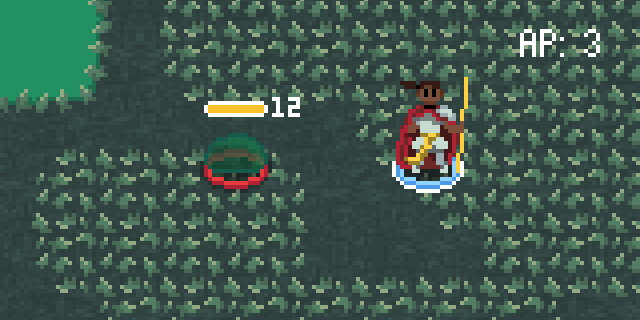 |
| Using Dynamic Deference and following up with Charged Slash |
Dynamic Deference: This spell consumes a large amount of AP initially, in exchange for deferring all of it to the next turn instead. This is a more simple ability, but I hope it will lead to interesting decision making. It allows Sonya to effectively sacrifice her turn in exchange for much more power in the next turn. In this case she idles so the Green Globber will move within range, then follows up with a massive twelve damage Charged Slash.
Also, since AP is shared for the entire party, any bonus AP abilities, such as Dynamic Deference, will complement the other characters' abilities also, by giving them an opportunity to perform their own extra powerful sequence of attacks.
 |
| Using Stalwart Focus to avoid the second Green Globber attack |
Stalwart Focus: Finally, Sonya can resist physical damage using Stalwart Focus. This spell applies a Shield effect proportional to the party's total AP. The next attack that would deal physical damage to Sonya will be reduced by the value of the Shield effect. In this example, Sonya gains +3 Shield, completely negating the second attack by the Green Globber which deals only two damage.
Part of the philosophy behind this ability is the idea that combat should always be possible without taking damage. In addition to the ability for characters to move to safe positions to avoid attacks, abilities like Stalwart Focus will allow for alternative strategies to reduce or avoid damage. A new player may still take damage, and heal with items, but I want an experienced player to be able to strategize to complete fights without losing health at all.
Stray Thoughts
I hope this gives a good representation of my ideas behind Sonya's character and combat design, as well as more information about the combat system generally. I look forward to sharing more about the other characters as well. Duran in particular will be very interesting to design. Also, bear in mind as always that this is only showing the initial prototype of Daughter of Dreams and things are subject to change and grow over time.
